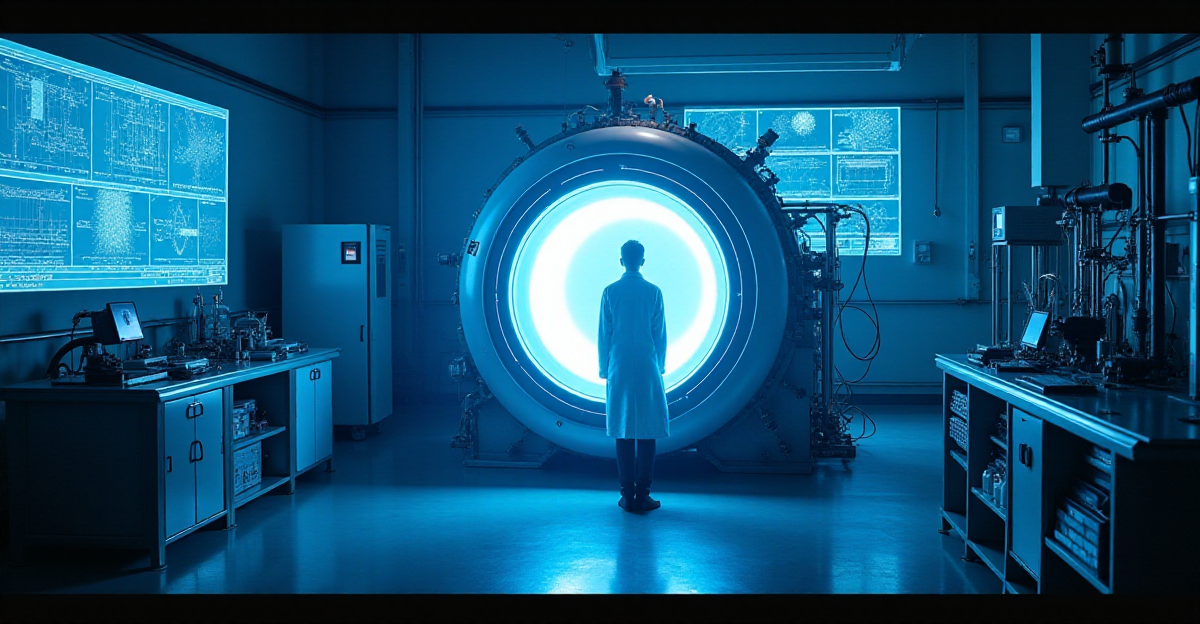Superconductivity is the phenomena whereby, at low temperature below a certain temperature some materials conduct electricity with zero resistance. From its invention in 1911 to current uses in MRI scanners, maglev trains, and even lossless power grids, this page chronicles the history. A tour of a physics research center exposed me to the cryogenic settings required for superconductivity—a world in which science seemed to contradict accepted knowledge. We will look at the present difficulties in locating room-temperature superconductors and how this can transform technology and energy economy. This work not only clarifies superconductivity but also stimulates the idea about a future with almost infinite energy economy.
Table of Contents
- The Phenomenon Explained: Superconductivity and its Amazing Potential
- Real-World Applications of Superconductivity
- The Quest for Room-Temperature Superconductors
- Extra’s:
The Phenomenon Explained: Superconductivity and its Amazing Potential

Have you ever considered how electricity might flow without loss? That’s the enchantment of superconductivity! Imagine a time when transmission energy loss is totally eradicated! That would be quite fantastic. A mind-boggling phenomenon known as superconductivity is wherein some materials unexpectedly become ideal conductors when chilled down to very low temperatures.
A Glimpse into the World of Extremely Cold Environments
Superconductivity occurs in cryogenics, a field of physics defined by very cold surroundings. Imagine a lab full of odd-looking tools like enormous thermoses containing liquid nitrogen and helium. Materials are chilled down to shockingly low temperatures, almost what scientists refer to as absolute zero, using these compounds. This is the magical place. I had the opportunity to see this phenomena personally by touring a physics research center. It felt as though one were entering a science fiction film. Scientists cool materials to temperatures almost absolute zero, and then these materials change. They become ideal conductors of electricity, letting current pass unhindered. The way materials alter their characteristics at such low temperatures was intriguing.
Superconductivity: Revolutionizing Our World
Many facets of human life could be revolutionised by superconductivity. In electrical circuits, it allows zero resistance, hence fostering unmatched energy efficiency. This means we could create lossless power grids whereby energy flows without any loss, hence greatly lowering waste and optimizing energy use. Imagine running our businesses and houses on almost limitless supply of energy!
Medical technologies present one of the most fascinating uses for superconductivity. Strong magnets utilized in MRI devices depend on superconductivity. These devices help diagnosis and therapy by letting doctors view into the human body with amazing detail.
Superconductivity is also fundamental in magnetic levitation, which opens actual future possibilities for fast maglev trains. Imagine flying through the air on trains that never ground themselves! These trains would transform travel by being quite fast and efficient.
In science nowadays, the search for “room-temperature superconductors” is a hot subject. Should researchers identify a substance that superconducts at ambient temperature, it might fundamentally alter the planet. Faster computers, more effective energy generation, and even transformed transportation were on display. Imagine superconducting trains rapidly transporting us across continents in record speed, therefore accelerating travel, increasing efficiency, and reducing environmental impact. The opportunities are really very unlimited!
I urge you to explore the field of superconductivity more closely. Libraries and many internet resources abound that will enable you to grasp this intriguing phenomena. Who knows—you might even be motivated to help search for “room-temperature superconductors.” Your contribution could help our planet to be transformed by this amazing technology.
Real-World Applications of Superconductivity

Have you ever considered a society in which electricity runs unhindered? That is the truth of superconductivity, an amazing occurrence whereby some materials lose all resistance to electrical current upon extremely low temperature cooling. From medical and transportation to energy and computing, this amazing quality could completely transform many different disciplines. Let’s investigate some fascinating practical uses of superconductivity and their influence on our future.
There are many possible uses for superconductivity and researchers are continuously looking for fresh approaches to exploit its special qualities. Among the most well-known instances are those in medical technology. Crucially for Magnetic Resonance Imaging (MRI) equipment, powerful magnets generate large magnetic fields using superconducting elements. These disciplines enable clinicians to create finely detailed representations of the human body, therefore offering vital information for diagnosis and treatment. Often using liquid helium as a coolant, the superconducting magnets used in MRI scanners run at quite low temperatures. Other medical equipment including Magnetic Resonance Spectroscopy (MRS), which aids in the study of brain function and metabolism, depends on these superconducting magnets as well.
Another fascinating use is in fast travel. Using magnetic levitation to drive oneself, Maglev trains make advantage of superconducting magnets to reach amazing rates and efficiency. These trains minimize friction by hovering over the rails, therefore allowing smooth travel. One of the fastest trains in the world, the Shanghai Maglev Train is most well-known example of a maglev train since it uses superconducting magnets to reach speeds of about 430 kilometers per hour (267 mph). Still, there are other instances outside the Shanghai Maglev. Additionally in development in Japan is a maglev rail line that would get Tokyo to Nagoya in forty minutes! Often called bullet trains, these trains provide a window into the future of transportation since their ability to drastically cut travel times and energy consumption.
Harnessing the Power of Superconductivity for Energy Efficiency
Furthermore greatly enhancing energy efficiency is superconductivity. The capacity of superconducting materials to run electricity with zero resistance can transform distribution and transmission of power.Driven by superconducting cables, highly efficient power networks would drastically cut energy waste during transmission, therefore optimizing energy use and lowering our need on fossil fuels. Imagine life without energy loss! Superconducting wires might enable this vision to come true. Using cryogenic technologies, these cables—which have been chilled to very low temperatures—offer a more effective means of moving power across great distances. Since this zero resistance results in much less energy lost during transmission, finally increasing efficiency and lowering energy consumption.
The Quest for “Room-Temperature Superconductors”
Scientists’ dream is for a world in which superconductivity occurs at ambient temperature! The revelation of “room-temperature superconductors” would transform everything. Not more costly and sophisticated cryogenic cooling systems! Faster computers, more potent magnetic fields, and enhanced energy storage devices could all follow from this discovery. See the possibilities! With present technology, we could have levitating cars, immensely efficient energy systems, and super-fast computers able to solve issues in seconds that would take years. Though there are almost endless possible uses, scientists still have great difficulty reaching “room-temperature superconductivity.” To get around these obstacles, they are aggressively investigating several research directions including new materials and creating fresh theoretical models.
A remarkable and maybe world-changing phenomena is superconductivity. Although we still have a long way to go, superconductivity has high future prospects for technological development and a more sustainable one.
The Quest for Room-Temperature Superconductors

Imagine a world in which, even on the hottest summer day, power flows through zero resistance, wire-based systems For decades, scientists have been enthralled with “room-temperature superconductors,” a dream project. From transforming transportation and energy systems to enhancing medical imaging and computing capability, such a discovery has enormous possible advantages. In a future when our cars can go amazing distances without consuming fuel and our phones never need to be charged, Though the search for superconductors at ambient temperatures promises to change our planet, it sounds more like science fiction.
Imagine boarding a train that glides lightly through the air, accelerating to hitherto unthinkable rates. Should we attain “room-temperature superconductivity,” this is only one of the several scenarios that might materialize. These days, superconductors only operate at very low temperatures, hence sophisticated and costly cooling mechanisms are needed. For example, magnetic resonance imaging (MRI) machines—which depend on superconductors—have to be maintained at very low temperatures, therefore highlighting the difficulties of employing superconductors in routine use. Imagine, therefore, a world in which superconductivity occurs at ambient temperature. This would be a paradigm shift and create a whole fresh universe of opportunities.
Harnessing the Power of Superconductivity
A remarkable phenomena known as superconductivity is wherein some materials show zero resistance to the passage of electricity. This implies that amazing energy efficiency results from electricity flowing through these materials not wasting any energy. Let us investigate few of the fascinating uses for “room-temperature superconductors”:
- Faster, More Powerful Computers: Superconductivity would allow for faster and more efficient data processing, leading to breakthroughs in artificial intelligence, quantum computing, and scientific modeling.
- Magnetic Levitation and High-Speed Trains: “Room-temperature superconductors” could enable the development of magnetic levitation trains, capable of reaching incredible speeds without the friction and energy losses of traditional rail systems.
- Lossless Power Grids: Imagine a world where electricity flows through power lines without any loss of energy. This could mean a more efficient and sustainable energy infrastructure, reducing our dependence on fossil fuels and mitigating climate change.
The Challenges and Opportunities
Seeking superconductors at room temperature is an exciting but difficult road. It entails exploring the secrets of condensed matter physics and materials science in great detail, then looking for materials displaying superconductivity at ambient temperatures. Investigating novel materials such as “high-temperature superconductors,” which show superconductivity at rather greater temperatures than conventional materials, seems to be one exciting direction. In order to release their possibilities for “room-temperature superconductivity,” researchers are also working with unusual materials including graphene and carbon nanotubes.
You might be asking, “What’s the next great step in this quest?” The solution is in ongoing research, teamwork, and a relentless search for scientific creativity. Finding superconductors at ambient temperatures could yield quite large benefits. Imagine a time where we had access to faster computers and more potent medical imaging technology and could create lossless power grids and levitating trains. Though one that scientists are striving to realize, this future feels like science fiction.
The path to identify “room-temperature superconductors” is evidence of human creativity and the unrelenting quest of scientific development. We are approaching a time when superconductivity is not a fantasy but a reality, transforming the environment around us in ways we can only begin to conceive as we still study the secrets of materials science. Investigate the materials accessible online and interact with the scientific community to discover more about the interesting universe of superconductors and the continuous search for “room-temperature superconductors.”
Extra’s:
If you’re fascinated by the concept of zero resistance and the potential it holds, you might also be interested in exploring the equally mind-bending world of “Quantum Entanglement: The Spooky Action Explained.” This phenomenon, where particles can be linked across vast distances, shares a similar level of strangeness with superconductivity, challenging our understanding of the fundamental nature of reality. Similarly, the mysteries of “Unseen Forces: The Quest to Understand Dark Matter” echo the perplexing nature of superconductivity. While we can observe its effects, the underlying mechanisms driving this phenomenon remain shrouded in mystery, just as the nature of dark matter continues to elude us.
For a deeper dive into the practical applications of superconductivity, “The Application of Superconducting Magnetic Levitation | Stanford Magnets” offers a fascinating exploration of this technology. This article delves into the possibilities of magnetic levitation, which relies on the properties of superconductors to achieve frictionless movement. For insights into the potential impact of superconductors on the future of energy efficiency, “Superconductors in Data Centers: The Future of Energy Efficiency? – Future Bridge NetZero Events” provides an engaging discussion on how these materials could revolutionize data center operations. These articles showcase the real-world implications of superconductivity, highlighting its potential to transform various industries.












1 thought on “Superconductivity: The Path to Zero Resistance”